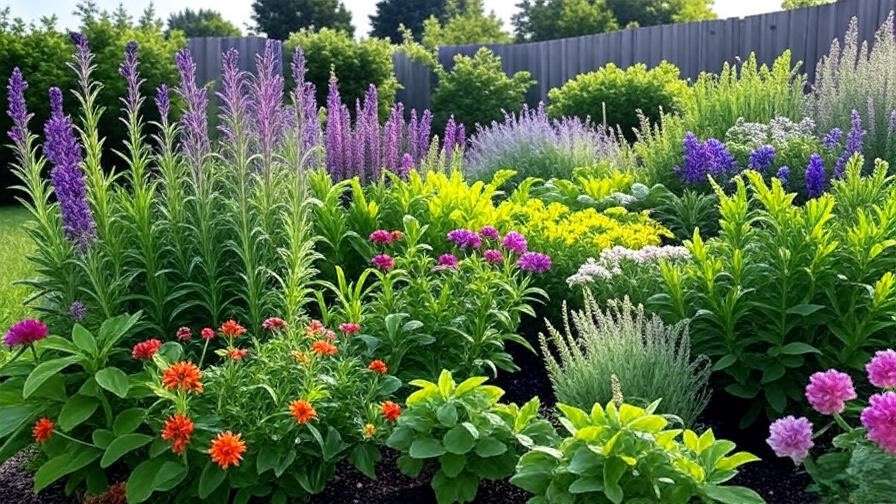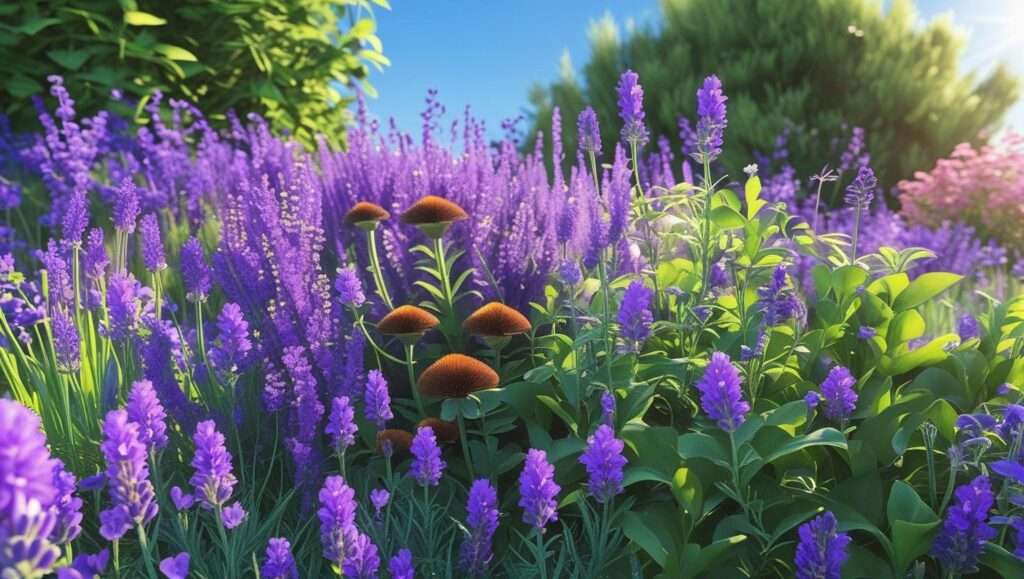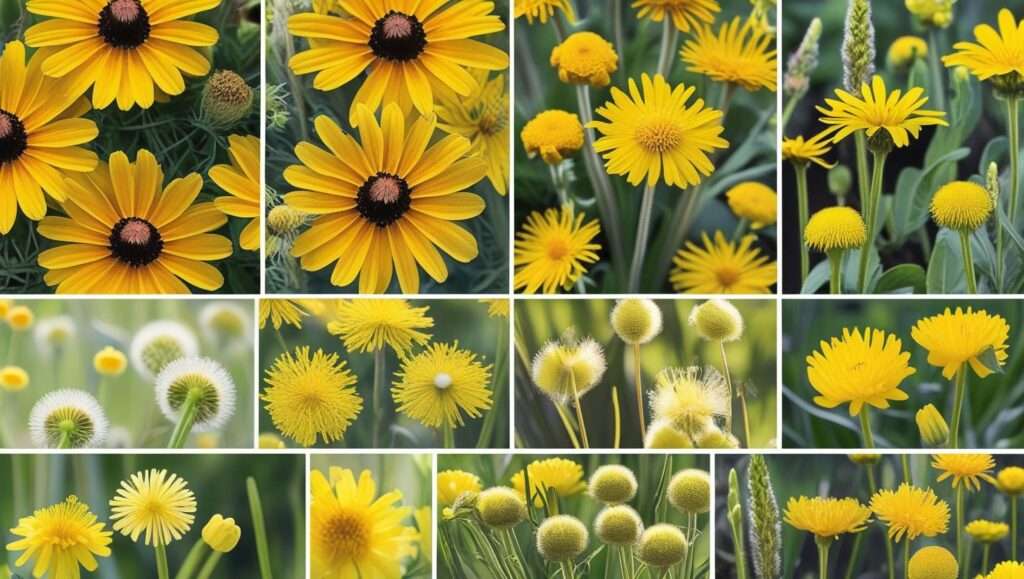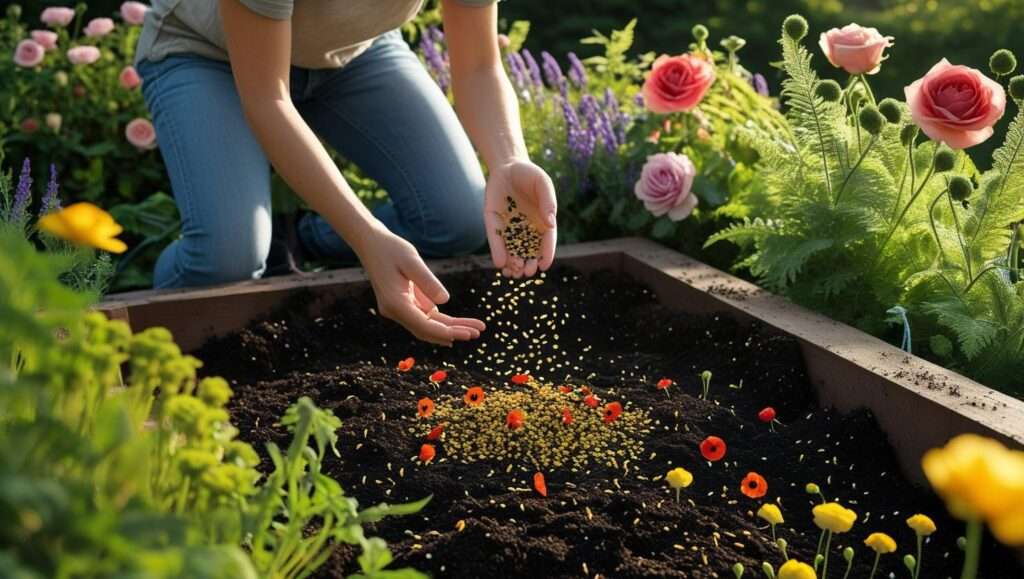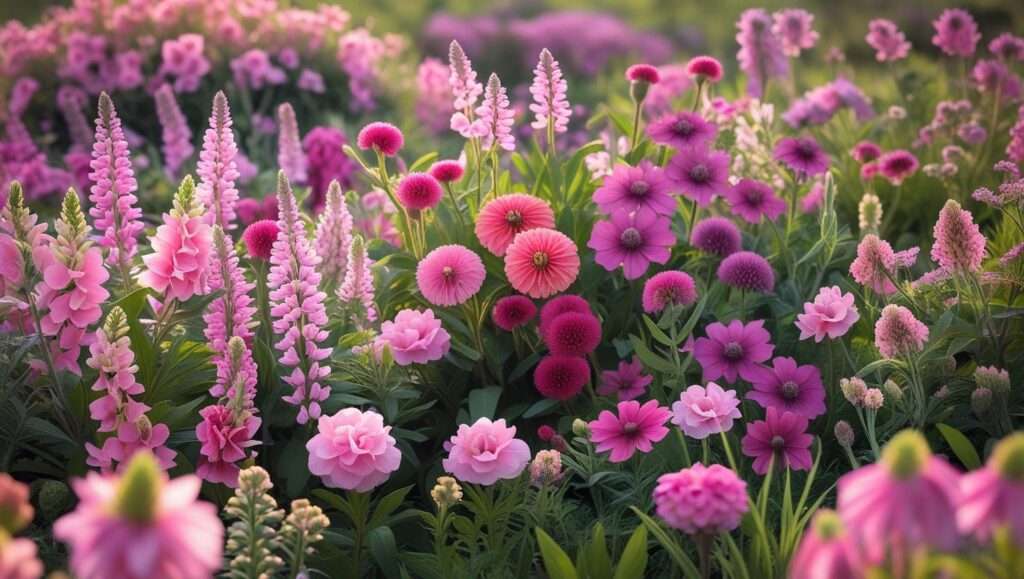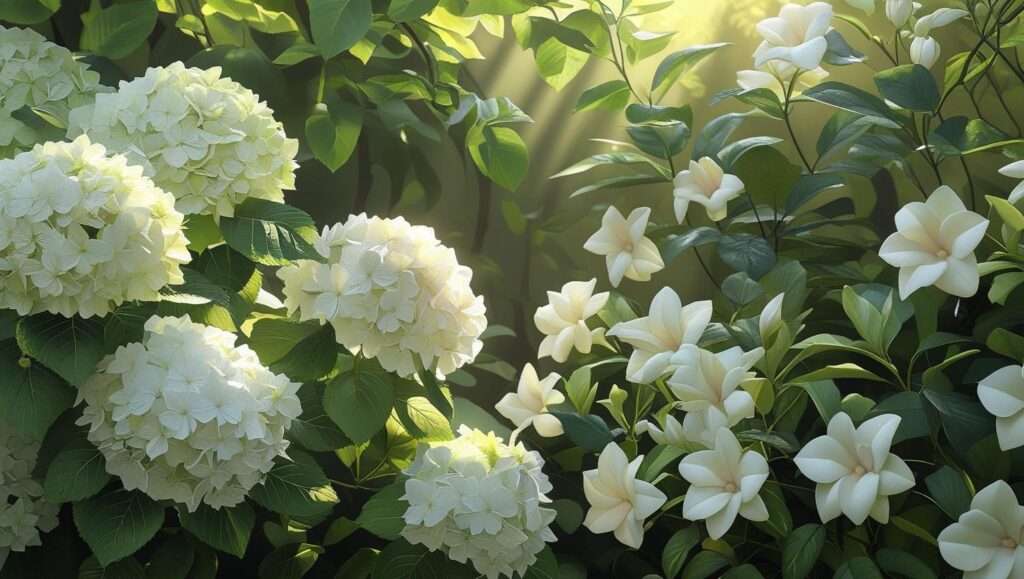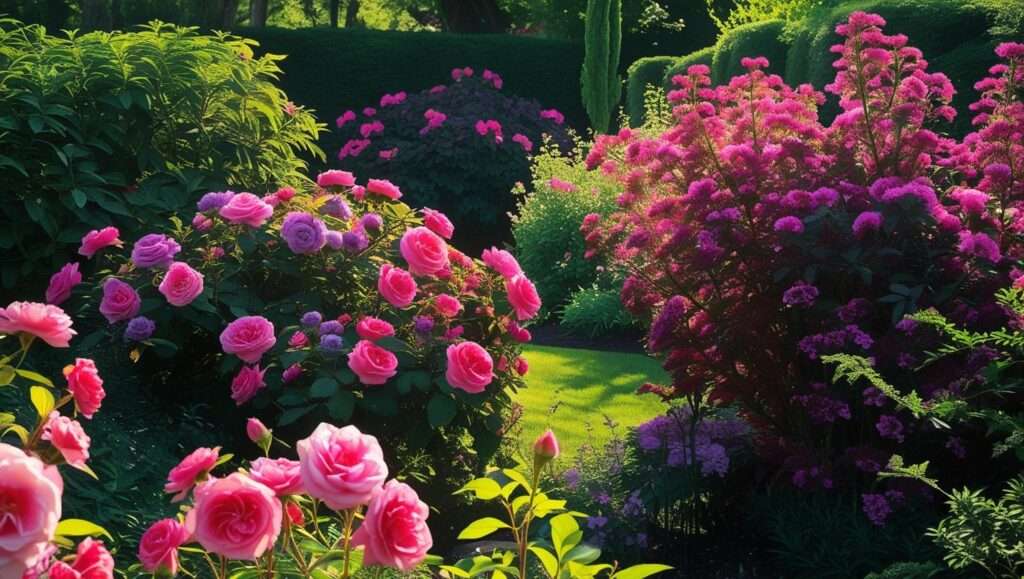Picture this: you’ve spent weeks nurturing your garden, coaxing vibrant blooms and lush greenery to life, only to wake up one morning to find your plants nibbled to stubs by ravenous rabbits. It’s a heartbreak every gardener dreads. Rabbits, with their insatiable appetite for tender shoots and delicate flowers, can turn a thriving garden into a buffet overnight. Fortunately, there’s a solution: rabbit resistant perennials. These hardy, long-lasting plants not only deter rabbits but also bring beauty, sustainability, and low-maintenance charm to your garden. In this comprehensive guide, we’ll explore the top 10 rabbit resistant perennials, backed by expert insights and practical tips, to help you create a flourishing, pest-resistant landscape. Whether you’re a seasoned gardener or a beginner, this article will empower you to reclaim your garden from rabbits while enhancing its curb appeal and ecological value.
Why Rabbits Are a Challenge for Gardeners
The Problem with Rabbits
Rabbits are notorious for their destructive eating habits. According to the University of Illinois Extension, rabbits favor tender, young shoots, soft leaves, and colorful flowers, often targeting plants in their prime growing season. A single rabbit can decimate a small garden bed in hours, leaving behind clipped stems and scattered leaves. In suburban and rural areas, where rabbit populations thrive, gardeners face an ongoing battle to protect their landscapes. The damage isn’t just cosmetic—repeated grazing can weaken plants, stunt growth, and even kill young perennials before they establish.
Why Perennials Are Ideal for Rabbit-Proof Gardens
Perennials, which return year after year, are a gardener’s best ally in creating a rabbit-resistant landscape. Unlike annuals that require replanting, perennials offer longevity and resilience, making them a cost-effective and sustainable choice. Many rabbit resistant perennials possess natural defenses, such as bitter tastes or tough textures, that make them unappealing to rabbits. Beyond pest resistance, perennials support pollinators like bees and butterflies, reduce water usage compared to annuals, and improve soil health by maintaining root systems year-round. By choosing the right perennials, you can create a garden that’s both beautiful and functional.
What Makes a Plant Rabbit Resistant?
Key Characteristics of Rabbit Resistant Perennials
Not all plants are rabbit magnets. Certain perennials deter rabbits due to specific traits: bitter or toxic compounds, fuzzy or leathery leaves, or strong aromas. For example, plants like foxglove contain alkaloids that rabbits instinctively avoid, while lavender’s potent fragrance overwhelms their sensitive noses. Fuzzy foliage, like that of lamb’s ear, feels unpleasant to rabbits, and tough, woody stems, such as those of Russian sage, are difficult to chew. Understanding these characteristics helps gardeners select plants that naturally repel rabbits without relying on chemical deterrents.
Factors to Consider When Choosing Perennials
When selecting rabbit resistant perennials, consider your local climate and USDA hardiness zone to ensure plants thrive. For instance, lavender flourishes in zones 5-9 with well-drained soil, while catmint tolerates colder zones (3-8). Soil type and sunlight exposure are equally critical—yarrow thrives in poor, dry soils, while foxglove prefers moist, shady conditions. Aesthetic appeal matters too. Choose perennials that complement your garden’s design, whether you’re aiming for a cottage-style border or a modern, structured layout. Balancing functionality with beauty ensures a cohesive, rabbit-resistant garden.
Expert Insight
“Rabbits are selective eaters, but they’re not invincible,” says Dr. Emily Carter, a horticulturist with the Cornell Cooperative Extension. “Plants with strong scents or tough textures are your best bet for keeping them at bay. Combine these perennials with physical barriers like low fencing for maximum protection.” Experienced gardeners also recommend interplanting rabbit-resistant species with more vulnerable plants to create a natural deterrent system, reducing the need for sprays or traps.
The Top 10 Rabbit Resistant Perennials
Overview
The following list of 10 rabbit resistant perennials was curated based on extensive research, gardener feedback, and recommendations from horticultural experts. Each plant was chosen for its proven ability to deter rabbits, ease of care, aesthetic appeal, and availability at most nurseries. Whether you’re looking to add vibrant color, texture, or fragrance to your garden, these perennials deliver beauty and resilience.

Perennial 1: Lavender (Lavandula spp.)
Lavender is a gardener’s dream: fragrant, drought-tolerant, and a natural rabbit repellent. Its silvery-green foliage and spikes of purple blooms add elegance to any landscape. Rabbits steer clear due to lavender’s strong scent and slightly fuzzy leaves, which are unpalatable to them. Plant in full sun with well-drained soil, ideally in USDA zones 5-9. Lavender thrives in Mediterranean-like conditions and requires minimal watering once established. Use it in borders, as a low hedge, or in rock gardens for a pop of color and fragrance.
Perennial 2: Salvia (Salvia spp.)
Salvia, with its vibrant flower spikes in shades of blue, purple, or red, is a pollinator magnet and a rabbit deterrent. Its aromatic foliage, rich in essential oils, repels rabbits effectively. Salvia grows well in full sun to partial shade and is hardy in zones 4-9. It’s low-maintenance, tolerating drought and poor soils. For best results, deadhead spent blooms to encourage continuous flowering. Incorporate salvia into mixed borders or pollinator gardens for a burst of color that rabbits avoid.
Perennial 3: Catmint (Nepeta spp.)
Catmint’s soft, gray-green foliage and lavender-blue flowers make it a versatile addition to any garden. Its pungent, mint-like aroma deters rabbits, while its nectar-rich blooms attract bees and butterflies. Hardy in zones 3-8, catmint thrives in full sun and well-drained soil. It’s drought-tolerant and requires minimal care, making it ideal for low-maintenance gardens. Use catmint as a ground cover, edging plant, or in rock gardens for a soft, billowy effect.
Perennial 4: Yarrow (Achillea millefolium)
Yarrow’s feathery foliage and flat clusters of flowers in white, pink, or yellow add texture and charm to gardens. Its bitter taste and tough, fern-like leaves make it unappealing to rabbits. Yarrow is incredibly hardy, thriving in zones 3-9 and tolerating poor, dry soils. Plant in full sun for best results, and divide every few years to maintain vigor. Yarrow shines in mixed borders, wildflower gardens, or as a companion plant to deter rabbits from more vulnerable species.
Perennial 5: Foxglove (Digitalis purpurea)
Foxglove’s tall spires of tubular flowers in pink, purple, or white create a dramatic focal point in shady gardens. Its leaves contain alkaloids that are toxic to rabbits, making it a reliable deterrent. Hardy in zones 4-8, foxglove prefers partial shade and moist, well-drained soil. Note that foxglove is biennial in some cases, so plan for reseeding or replanting. Use it to add vertical interest to woodland gardens or shady borders, but keep it away from pets and children due to its toxicity.
Perennial 6: Bee Balm (Monarda spp.)
Bee balm, with its vibrant, spiky blooms in shades of red, pink, or purple, is a standout in any garden. Its minty aroma, derived from its relation to the mint family, repels rabbits while attracting bees, butterflies, and hummingbirds. Hardy in zones 4-9, bee balm thrives in full sun to partial shade and prefers moist, well-drained soil. Regular deadheading encourages prolonged blooming. Plant bee balm in pollinator gardens or mixed borders for a burst of color and ecological benefits, knowing rabbits will steer clear.
Perennial 7: Russian Sage (Perovskia atriplicifolia)
Russian sage offers airy, lavender-blue flower spikes and silvery foliage that add a soft, ethereal quality to landscapes. Its aromatic leaves and woody stems are unappealing to rabbits, making it a reliable choice for pest-resistant gardens. Hardy in zones 5-9, Russian sage thrives in full sun and well-drained soil, tolerating drought and heat with ease. Prune it back in spring to maintain shape. Use Russian sage as a backdrop, focal point, or in xeriscape designs for low-maintenance beauty.
Perennial 8: Lamb’s Ear (Stachys byzantina)
Lamb’s ear is beloved for its soft, fuzzy leaves that create a velvety ground cover. Its woolly texture is a natural deterrent to rabbits, who find it unpleasant to chew. Small purple flowers add subtle charm in summer. Hardy in zones 4-8, lamb’s ear prefers full sun and dry, well-drained soil. It’s drought-tolerant and requires minimal care, making it ideal for low-maintenance gardens. Use it as a ground cover, edging plant, or in tactile gardens where its texture can be appreciated.
Perennial 9: Ornamental Allium (Allium spp.)
Ornamental alliums, with their globe-shaped flower heads in shades of purple, white, or pink, add architectural flair to gardens. Their onion-like smell, a hallmark of the Allium family, repels rabbits effectively. Hardy in zones 4-8, alliums thrive in full sun and well-drained soil. They’re low-maintenance and resistant to most pests. Plant alliums in clusters for a bold statement or scatter them in mixed borders for pops of color and structure that rabbits avoid.
Perennial 10: Peony (Paeonia spp.)
Peonies are a gardener’s treasure, with lush, fragrant blooms in late spring that range from soft pastels to vibrant reds. Their bitter taste and thick, sturdy foliage make them unpalatable to rabbits. Hardy in zones 3-8, peonies prefer full sun to partial shade and rich, well-drained soil. Once established, they can live for decades with minimal care. Use peonies as statement plants in mixed borders or as focal points in cottage-style gardens for enduring beauty.
How to Integrate Rabbit Resistant Perennials into Your Garden
Planning Your Garden Layout

Creating a rabbit-resistant garden requires thoughtful design. Layer plants strategically: place taller perennials like Russian sage or foxglove at the back of borders to act as natural barriers, with lower-growing plants like lamb’s ear or catmint in front. Companion planting is key—intermix rabbit-resistant perennials with more vulnerable plants to reduce overall damage. For example, planting lavender around tulips can deter rabbits from nibbling. Consider texture and color contrasts to enhance visual appeal while maintaining functionality.
Maintenance Tips for Long-Term Success
To ensure your rabbit resistant perennials thrive, follow proper care guidelines. Water newly planted perennials regularly until established, then adjust based on their needs—lavender and yarrow are drought-tolerant, while foxglove and bee balm prefer consistent moisture. Prune spent blooms on salvia and catmint to encourage reblooming, and cut back Russian sage in spring for compact growth. Fertilize sparingly, using organic compost for most perennials. Monitor for rabbit activity, especially in spring, and inspect plants for signs of nibbling to address issues early.
Complementary Rabbit Deterrents
While rabbit resistant perennials are highly effective, combining them with other deterrents boosts protection. Low fencing (2-3 feet high) made of wire mesh is a reliable barrier, as rabbits rarely jump over obstacles. Natural repellents, like garlic or hot pepper sprays, can be applied around plant bases but require reapplication after rain. Motion-activated sprinklers offer an eco-friendly solution, startling rabbits without harm. Avoid chemical repellents that may affect pollinators or soil health, and always prioritize sustainable methods.
Common Mistakes to Avoid When Planting Rabbit Resistant Perennials
Mistake 1: Ignoring Local Conditions
Choosing perennials without considering your USDA hardiness zone or soil type can lead to poor growth and reduced rabbit resistance. For example, lavender struggles in heavy, clay soils, while foxglove thrives in moist, loamy conditions. Use a USDA zone map (available at usda.gov) to select plants suited to your region, and test your soil to match plants to its pH and drainage.
Mistake 2: Overcrowding Plants
Planting perennials too closely can stunt growth and increase disease risk, weakening their natural defenses. Follow spacing guidelines—lavender needs 18-24 inches between plants, while peonies require 3-4 feet. Proper spacing ensures good air circulation and robust root systems, enhancing rabbit resistance and overall health.
Mistake 3: Neglecting Early Protection
Young perennials are more vulnerable to rabbit damage before they fully establish. Protect new plants with temporary netting or cloches until their roots and foliage mature. For example, wrapping young foxglove in lightweight mesh for the first season can prevent nibbling while allowing growth.
Expert Tip
“Many gardeners assume rabbit-resistant plants are foolproof, but establishment is key,” says Dr. Emily Carter. “Protect young plants and choose species suited to your climate to maximize their natural defenses. Patience pays off with perennials—they get tougher with time.”
Benefits of a Rabbit Resistant Garden Beyond Pest Control
Environmental Impact

Rabbit resistant perennials do more than deter pests—they support a healthier ecosystem. Plants like salvia, bee balm, and catmint attract pollinators, boosting biodiversity and aiding food production. Their deep root systems improve soil structure and reduce erosion, while drought-tolerant options like lavender and yarrow conserve water, making your garden eco-friendly.
Aesthetic and Property Value
A well-designed garden with rabbit resistant perennials enhances curb appeal and can increase property value. According to the National Association of Realtors, landscaping improvements can boost home value by up to 12%. Vibrant blooms and varied textures from peonies, alliums, and Russian sage create a polished, inviting look that impresses neighbors and potential buyers alike.
Mental and Emotional Benefits
Gardening is a proven stress reliever, and a low-maintenance, rabbit-resistant garden amplifies this benefit. The joy of seeing your perennials thrive without constant replanting or rabbit battles fosters a sense of accomplishment. Spending time in a flourishing garden, surrounded by fragrant lavender or colorful salvia, promotes mental well-being and connection to nature.
FAQs About Rabbit Resistant Perennials
Are rabbit-resistant perennials also deer-resistant?
While there’s some overlap, not all rabbit-resistant perennials deter deer. Lavender, yarrow, and Russian sage are often deer-resistant due to their strong scents or tough textures, but peonies may attract deer. Check local extension resources for deer-resistant plant lists to complement your rabbit-proof garden.
Can I grow these perennials in containers?
Yes, many rabbit resistant perennials, like lavender, salvia, and catmint, thrive in containers. Use well-draining potting mix and ensure pots have drainage holes. Place containers in sunny spots for best results, and protect them from rabbits with elevated stands or mesh covers.
What if rabbits still eat my plants?
If rabbits nibble despite using resistant perennials, inspect for environmental factors like food scarcity, which may drive rabbits to less-preferred plants. Add deterrents like fencing or motion-activated sprinklers, and avoid overwatering, which can make foliage more tender and appealing.
Are these plants safe for pets?
Most listed perennials are pet-safe, but foxglove is toxic to cats, dogs, and humans if ingested. Keep pets away from foxglove, and opt for safer options like lavender or lamb’s ear if pets frequent your garden. Always consult your veterinarian if concerned.
How do I know which perennials suit my climate?
Check your USDA hardiness zone at usda.gov, and match plants to your region’s climate. Local agricultural extensions or nurseries can provide tailored advice. For example, peonies thrive in colder zones (3-8), while lavender prefers warmer climates (5-9).
Conclusion
Rabbit resistant perennials are a game-changer for gardeners battling pesky rabbits. From the fragrant blooms of lavender to the bold spires of foxglove, these 10 plants offer beauty, resilience, and low-maintenance charm. By integrating them into your garden with thoughtful design and care, you can create a thriving, pest-resistant landscape that supports pollinators and enhances your home’s appeal. Start small—try planting a few catmint or yarrow plants—and expand as you gain confidence. Share your experiences in the comments below, and explore more gardening tips on our website to keep your garden flourishing. With rabbit resistant perennials, you’re one step closer to a garden that’s as durable as it is dazzling.

